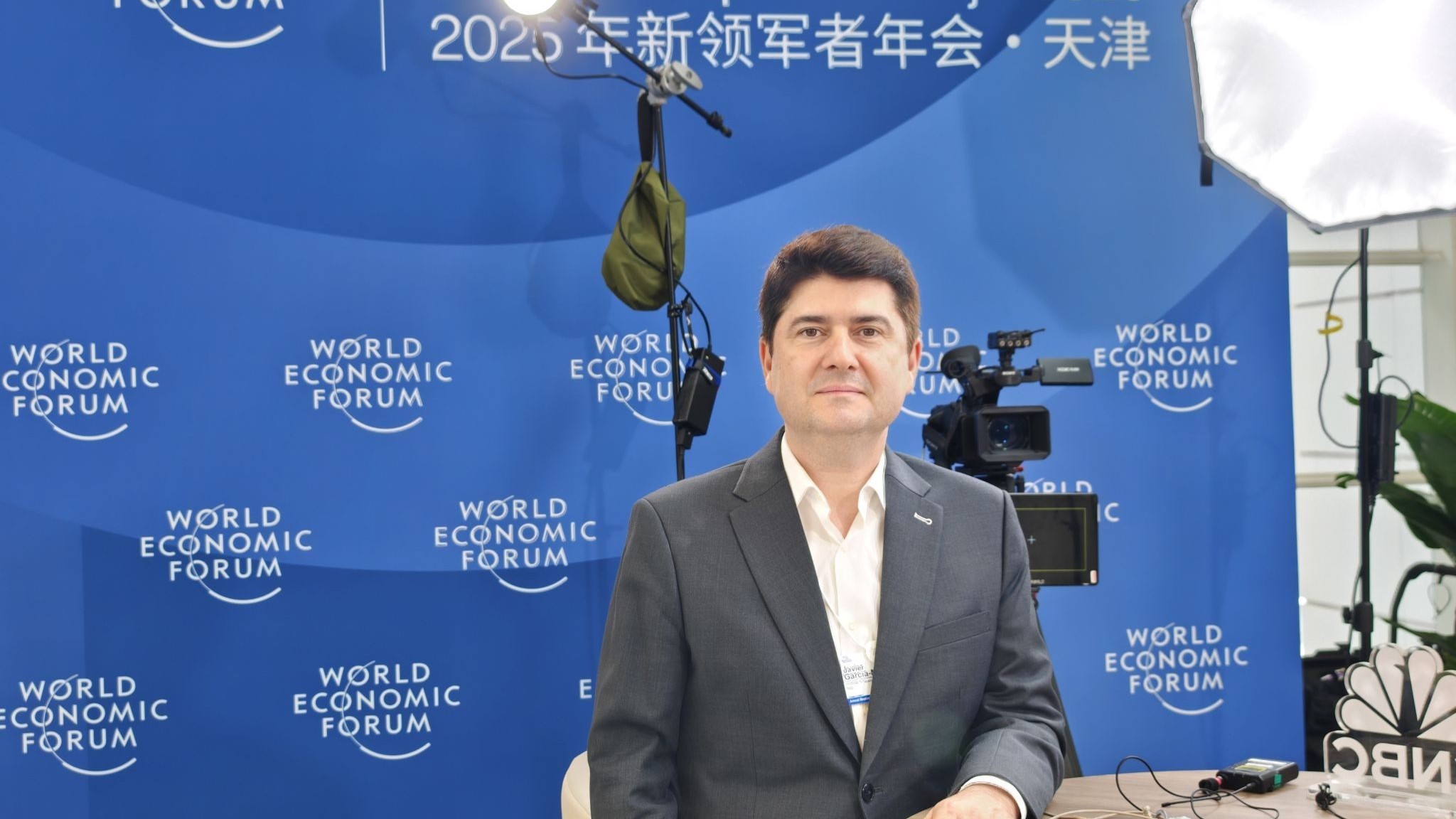
The World Economic Forum presented, at the Annual Meeting of the New Champions held at the Tianjin (China)its report on the Top 10 Emerging Technologies. The director of the Rafael del Pino Foundation's Chair in Science and Society, the Spanish scientist and entrepreneur Javier García Martínezhas participated in the drafting of two of them: Green nitrogen fixation y Nanoenzymes.
Thanks to the former, it is possible to converting atmospheric nitrogen into ammonia on a large scaleemissions, reducing the enormous environmental impact of this process, which currently consumes around 2 % of the world's energy. It is needed for fertiliser production, which in turn supports around 50% of global food production. These new methods would replace existing systems with bio-based or bio-inspired systems.
Nanoenzymes, on the other hand, are laboratory-produced and manufactured nanomaterials with enzyme-like properties. This is in contrast to those produced by living organisms or synthetically, which have considerable cost and complexity, nanoenzymes are much more stableThey are also cheaper and easier to produce.
As they are more robust, they could be used in a much broader set of conditions. Its applications range from therapeutics to water purification and food safety, and clinical trials are already underway for the treatment of cancer and neurodegenerative diseases.
As García Martínez explained, during the presentation of the World Economic Forum's report in Tianjin, it was made clear that the major global trends behind these emerging technologies. Among them, he highlighted for the Chair that "the convergence of technologies is consolidating and accelerating", and that the world is watching "with great interest". how China has achieved technological leadership so quickly in so many critical areas.
Another trend mentioned during the launch of the report refers to "the (dis)trust in technology as a growing concern", added Professor García Martínez. Obviously, the recent US measures affecting universities, cuts in research, students and mobility problems were also discussed, which "could further accelerate the movement towards Asia".
The other emerging technologies included in the World Economic Forum's Top 10 are as follows:
-Structural composites for batteries: weight-bearing materials, such as carbon fibre or epoxy resin, which can also store electrical energy. This technology could make electric vehicles lighter and more efficient, and could also be applied to aircraft, as potential applications include airframes.
-Osmotic energy systems: What if energy could be generated from the difference in salinity between two water sources? That is the promise of osmotic energy systems, with the potential to generate clean, renewable, low-impact electricity.
-Advanced nuclear technologies: From alternative cooling fuels to small modular reactors (SMRs), there are a number of technological advances aimed at reducing costs, simplifying designs and boosting nuclear power generation in countries around the world. The ultimate goal is to achieve nuclear fusion. If achieved, it will provide a transformative solution to our global energy challenges.
-Designed Life Therapy: lcientists hope that by turning beneficial bacteria into tiny drug factories, they can treat diseases from inside the body. The impact? Cheaper and more effective long-term care.
-GLP-1 for neurodegenerative diseases: A recently developed class of drugs originally developed to control type 2 diabetes and obesity, technically known as glucagon-like peptide 1 receptor agonists, or GLP-1 ARs, are showing promising results in the treatment of brain-related diseases such as Alzheimer's and Parkinson's disease.
-Autonomous biochemical detection: ehese devices detect and quantify specific biochemical parameters - such as disease markers or chemical changes in water to detect pollution - autonomously and continuously. Thanks to wireless communication and self-sufficient power sources, they enable continuous real-time monitoring.
-Collaborative detection: Individual sensors are already commonplace in our lives, but technological advances such as AI could change how cities function and how organisations use data to make decisions. Connected traffic lights could automatically adjust based on traffic cameras and environmental sensors, allowing them to manage congestion and reduce pollution.
-Generative watermarking: In an era of deepfakes and synthetic media, this technology adds invisible tags to AI-generated content, making it easier to identify what is real and what is fake, which will help combat misinformation and improve online trust.


